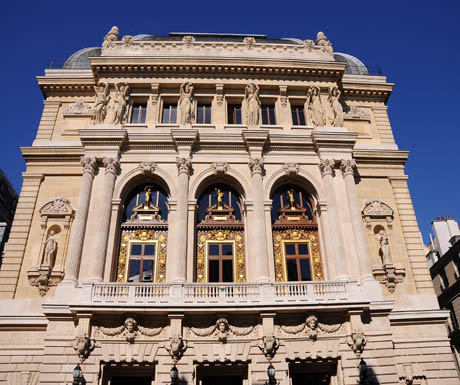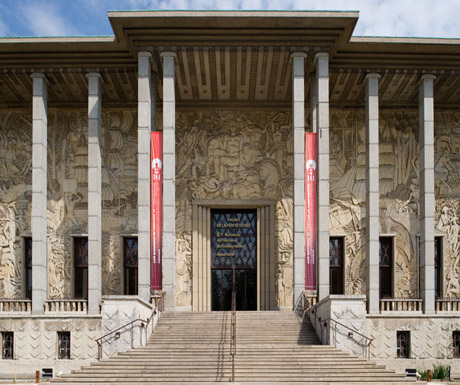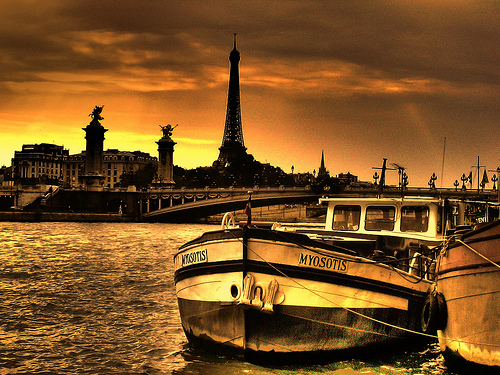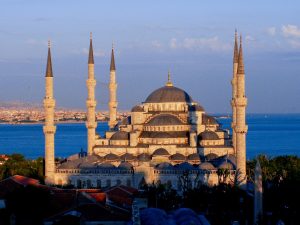There are so many things to do in Paris, that sometimes it is hard to make a proper choice. Instead of the traditional visits, here are four cultural suggestions you might wish to give a try during your next stay. They are typical Parisian activities. We must thank the famous king Louis the XIV for two of them. One was inaugurated in 1852. The last one was built for a universal exhibition in 1931. They are in historical order.
Visit the workshops of Gobelins Tapestry Manufactory
This renowned place in Paris takes its name from a famous family of dyers. At the beginning of the 17th century, when Henry IV launched a vast programme to develop production in France, he had tapestry workshops set up in the Faubourg-Marceau district which were run by 2 Flemish tapestry-weavers.

In 1662, Colbert, one of Louis XIV’s ministers, continued Henry IV’s work and created the Gobelins Royal Manufactory. Charles Le Brun, the first painter to the king, was its first director. Over the course of 30 years, he developed production significantly and this could be considered the golden age of the manufactory. Several other directors followed, such as the architects Robert De Cotte and Jacques-Germain Soufflot and the painter François Boucher.
Under Napoleon, the manufactory regained its prestige, producing tapestries and portraits to the glory of the Emperor. In 1826, the Soap Manufactory was linked to the Gobelins site and in 1937 the Gobelins Manufactory was made part of the Mobilier National. In 1940, the Beauvais Manufactory moved to the Gobelins site, following the destruction of their workshops during bombing. Additional weaving workshops were later established once again in Lodève and Beauvais.
Work began renovating the Gobelins Gallery during the 70s and it was opened to the public once more in May 2007. The role of this site is to display and promote the creations produced in the various manufactories and the expertise of the weavers to the general public. It will be hosting the Eloge de la Verdure (Eulogy to Greenery) exhibition from 9 April 2013 until 1 January 2014.
Today, the manufactory therefore has several roles: furnishing the Republic’s official palaces, preserving and restoring, as well as imparting knowledge and communicating. In addition to the temporary exhibitions, you can visit the Manufactory’s workshops. All the practical information about the Manufactory can be found on the website.
Attend a play in Opera Comique (celebrating this year its 300th birthday)
It was founded under the reign of Louis XIV to allow the travelling troupes to present their pantomimes and parodies of opera which unfailingly succeeded in enraging La Comédie Française which consequently lodged countless court proceedings against them. For a bit of peace and quiet, the Sun King decided to give them their own stage (the Opéra Comique) and asked them, in return, to be less provoking. It is this royal wish (very Pontius Pilate!) that gave rise to the name Opéra Comique. But the semantic ambiguity of the name incontestably undermines the institution which, nowadays, does not present comic works. The basic principle is to present works with alternating scenes of singing and dialogue, unlike operas where the entire partition is sung (recitative singing or arias).

As for the building itself, you can make up your own mind. Personally, while I acknowledge that the architectural intentions are interesting (the curves, the monumental windows, and the verticality of the overall structure) the overall result leaves me cold. It reminds me of the heavy and overloaded stuccos of the preferred architecture of the triumphant 19th century bourgeoisie. But then I have been known to let my imperial subjectivity get the better of me… Inside this opera house (situated not far from the hotel, in Place Boieldieu in the 2nd arrondissement of Paris) the ‘Salle Favart’ hall is named after Charles-Simon Favart, a famous author of opera librettos, who was the victim of his success. Indeed his plays were so successful in the 1740s that the other Parisian theatres were overshadowed and so, to solve this problem, the authorities at the time closed down the theatre for 6 years! And the hall itself has not had an easy time of it either: a fire destroyed it after a performance of Mozart’s Don Giovanni in 1838. Then a second, more theatrical fire broke out on the 25th of May 1887 during a performance of Mignon, a comic opera in three acts by Ambroise Thomas. In the plot, in the second scene of the second act, Lothario sets fire to the castle to avenge Mignon of the success of Philine. But the acting was overly realistic and this fire destroyed the premises and caused eighty-four people to perish! After eleven years of rebuilding work, the current hall, with a capacity of around 1500 places, was inaugurated in December 1898. Go check the different representations on the official website.
Take part in an auction in Hotel Drouot
“L’Hôtel Drouot” is the capital of auction houses in France, it has 21 rooms where auctioneers line up sale upon sale. Interested buyers and passers-by have access to an array of collections of French and international objets d’art before their sale. Jewellery, coins, old and new books, furniture and paintings are on display for public viewing the day before and the day of the auction. It is therefore advisable to monitor the auction schedule‘s rapid turnover regularly and the various associated catalogues. You won’t be able to see the imperial album of the Ming Dynasty which was sold for €7,800,000 a few years ago, but there are some magnificent pieces. With over 600,000 objects sold each year during the 2,000 auctions, there is something for everyone and every budget.
Discover the historical Palais de la Porte Dorée, its aquarium and its museum
Built in 1931 for the Colonial Exhibition, the Palais de la Porte Dorée used to be home to the Permanent Colonial Museum as well as the tropical aquarium. Only the latter has managed to stand the test of time. Indeed, the Colonial Museum changed its name in 1935 to become the Musée de la France d’Outre-mer until 1950. From 1961 the palace housed the Museum for African and Oceanic Art. In 1990 it changed and became the Musée National des Arts d’Afrique et d’Océanie until 2003 when it closed. Following refurbishing work, the Cité nationale de l’histoire de l’immigration took up residence there in 2007.

The aquarium at the Palais de la Porte Dorée is the oldest aquarium in Paris. Until 2006, when Cinéaqua was opened, it was also the only aquarium in Paris. Its story is linked to that of the palace and they have developed together. With 5,000 animals from 300 different species and its famous crocodile pit, the aquarium is very popular (more than 245,000 visitors in 2010). And its popularity is well-deserved!
The Cité Nationale de l’histoire de l’immigration
It is not worth trying to paraphrase or be original. Sometimes simply quoting is the blogger’s strongest weapon. Here is therefore how the palace presents the centre: “The museum’s aim is to demolish stereotypes, to dismantle ideas inherited from colonialism, to break away from convention. It is a question of demonstrating that the German poet from the 19th century and the Portuguese construction worker from the end of the 20th century […] are part of our country’s history”. Like the Cité, the aquarium also organises temporary exhibitions.
Didier Moinel Delalande is a Director at Hotel Mathurin. .


